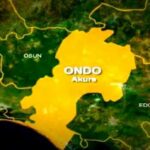
With the rains becoming heavier, many parts of Arochukwu Local Government Area of Abia State are already under the threat of devastating erosion which has become a common feature in many communities in the area.
In past years, it was common to see families abandon their homes whenever it rained because their homes lay within gully erosion sites that were up to 100 feet deep.
Daily Trust gathered that in many communities, the floods were constantly creating gully erosion sites in areas that hitherto did not have such problems and sometimes pulled down structures and that this had left fear in the life of those residing close to the sites.
The residents revealed that the large number of erosion sites seen in many communities started as small holes and later developed into big ones.
Idima Abam is one of the communities in Arochukwu that seats in the midst of age-long gully that threatens its existence every rainy season. Like most communities with similar environmental challenges, the gully, by all indications, is far beyond the scope and capacity of the community to control.
The community’s efforts in the past at checking the menace had not helped in addressing the problem. From piling of sand-filled bags and stones to channeling of water and planting Indian bamboo and trees, the residents said they had exhausted themselves in trying to control the erosion.
Dr. Dike Egwu Omaefi, an indigene of the community, whose house is on the verge of being swept away, stressed that all efforts, including planting of Indian bamboo and other trees, to check the rampaging erosion had failed to make any impact as each successive rainy season drew closer.
The house presently is not up to 10 metres from the erosion even when the rain is yet to reach its peak.
He said he used concrete pillars and embankment to support the house to prevent the erosion from sweeping it away.
He appealed to the government and the contractor handling the ongoing road construction in the community to come to their aid, urging the contractor to re-channel the flood or build a way for it so that his house would be preserved.
“The road construction should push the earth further and the contractor should do stone base drainage to take the water down,” he said.
For over 10 years Omaefi has been battling to save his house through self help measures yet the erosion keeps coming.
It can be observed from a closer look as there are cracks in the concrete pillars already which may likely make the pillars go down under heavy downpour.
Another member of the community, Mr Chukwudi Ukpabi, said the gully had encircled the entire community, attacking from every front, and that sadly, government was not aware of the development and as such, nothing was being done.
He lamented that the near total neglect of government had forced the community learn to live with the gully.
“Until recently, when the state awarded the contract for the construction of the only road linking the community, there is no government presence in the community. They only come to us during election campaigns,” he said.
Ukpabi said the gully, years ago, swept away the primary school he attended, Ohaeke Central School, Classes 1 to 3, thereby forcing its relocation to the premises of Classes 4 to 6. The school is close to the village square which also serves as the market.
However, it was gathered that the previous efforts by government at checking erosion either by agencies of government or through contract had not taken the community into consideration.
The Ecological Fund allocated to states with such challenges has not benefited the community either. With every passing rain, the people pray that their houses do not get submerged in the soft erosion-prone soil.
Also, the gully is said to be posing a formidable challenge to the ongoing road construction. Every rain washes the soft soil away, pushing it menacingly towards the road. Apart from the threat to the community, the entire stretch of road is at risk.
The people have called on the Federal and Abia State governments to come to their rescue now than to wait for the disaster and come later with truckloads of relief materials.
 Join Daily Trust WhatsApp Community For Quick Access To News and Happenings Around You.
Join Daily Trust WhatsApp Community For Quick Access To News and Happenings Around You.


